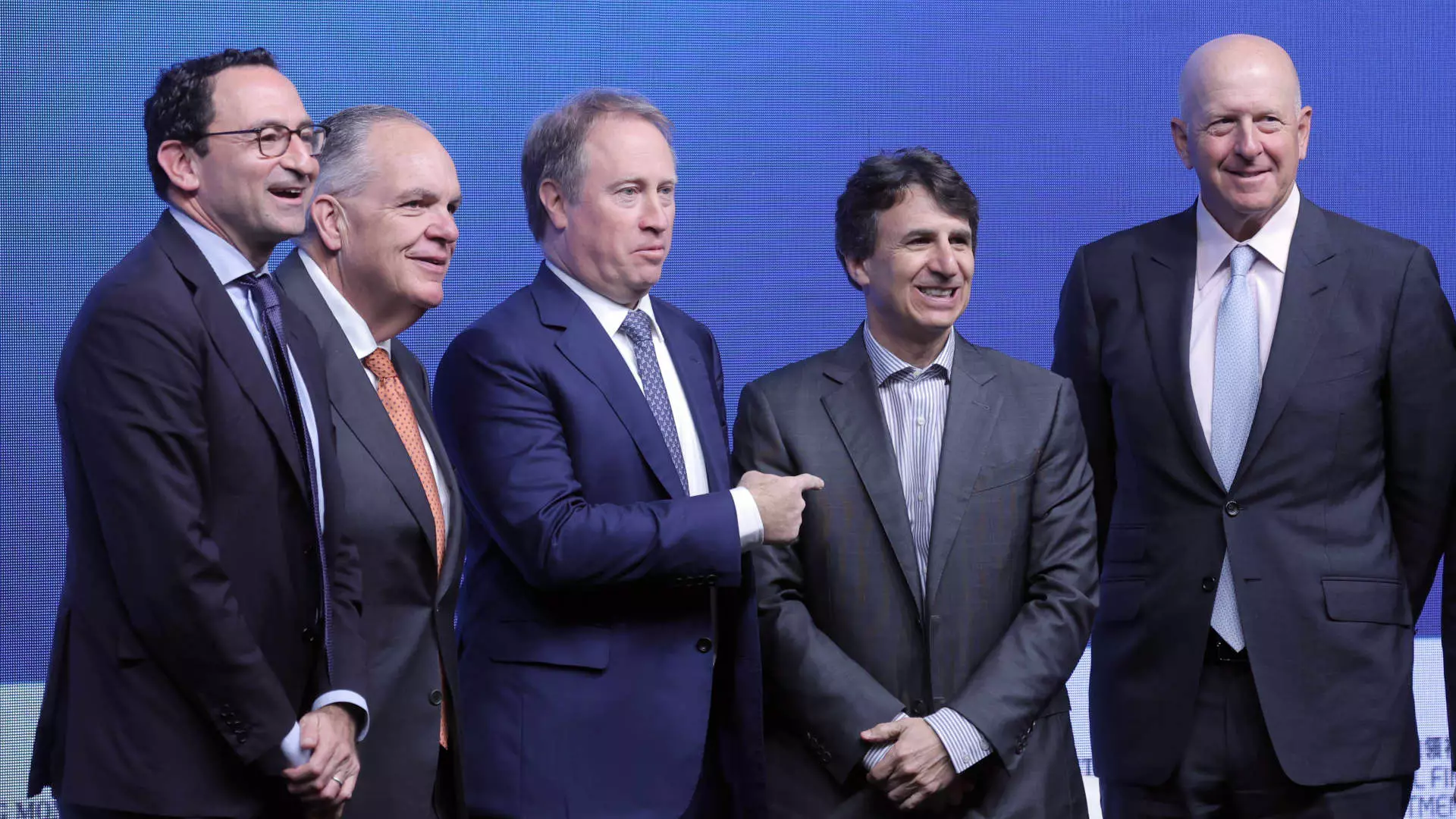In a striking turnaround, American investment banks have recently reported impressive earnings for the latest quarter, marking a period of significant recovery driven by increased trading activity and a revival in investment banking deal-making. Major players such as JPMorgan Chase and Goldman Sachs have reported record revenues, buoyed by heightened market enthusiasm and a more favorable economic backdrop. Notably, JPMorgan witnessed a remarkable 21% growth in fourth-quarter revenue, surging to $7 billion, while Goldman Sachs boasted a record $13.4 billion in its equities segment for the year. This resurgence comes after a challenging phase characterized by the Federal Reserve’s aggressive interest rate hikes aimed at combating inflation, signifying a rejuvenation of Wall Street’s operations.
The current financial climate has shifted dramatically, largely due to the easing monetary policies of the Federal Reserve and the political landscape following the recent presidential election. After a prolonged period of stagnation, where corporations remained hesitant in undertaking mergers and acquisitions due to regulatory uncertainties and escalating borrowing costs, the recent signals point towards a changing tide. Prominent figures in the industry, such as Morgan Stanley’s CEO Ted Pick, are optimistic about the growing appetite for mergers, driven by anticipated reductions in corporate taxes and a more streamlined approval process for mergers. This sentiment reflects a broader confidence among investment banks, with Morgan Stanley’s deal pipeline reported to be the most robust in over a decade.
Mergers and acquisitions (M&A) are critical to the functioning of investment banks, serving as vital sources of revenue that generate a cascade of subsequent transactions. Multi-billion-dollar deals are particularly crucial, providing high-margin returns and stimulating significant ancillary activities, including the issuing of loans and stock. Pick’s assertion regarding the vital role of M&A activity highlights a key component of Wall Street’s operational fabric: these transactions do not merely represent isolated events but catalyze broader investment bank engagement. This interdependence reinforces the expectation that an uptick in M&A activity will trigger an expansive ripple effect throughout the entire industry.
Another promising trend is the resurgence of capital markets, including both debt and equity issuances, which has shown a commendable recovery with a reported increase of 25% from the lows of the previous year. However, the sustained vitality of this recovery heavily relies on the normalization of merger and acquisition activity. As the absence of robust M&A transactions has limited overall market fluidity, industry analysts assert that a revival in this area is essential. The anticipation that corporations will increasingly seek to consolidate through acquisitions potentially amplifies the positive outlook for trading and associated financial services.
In addition to M&A, the initial public offerings (IPO) market appears poised for growth as investor confidence rises. Goldman Sachs CEO David Solomon noted a shifting perception among company leaders, suggesting that there is an escalating readiness to pursue public offerings. The increasing demand from investors and sponsors indicates a significant backlog of potential IPOs, setting the stage for a fruitful period for investment banks. The combination of an improving regulatory environment and a burgeoning appetite for capital market participation signals a dynamic shift that could redefine Wall Street’s landscape for the foreseeable future.
Despite the optimism surrounding the revival of trading and investment banking, challenges remain on the horizon. Regulatory scrutiny continues to pose hurdles, and the broader economic environment requires careful navigation. Nevertheless, the sentiment among industry leaders remains largely upbeat, with expectations of sustained earnings growth and investment banks preparing to capitalize on the evolving market dynamics. Analysts affirm that as confidence continues to build, Wall Street’s dealmakers are on the cusp of what could be a profitable and transformative phase, characterized by increased activities in both M&A and IPO sectors.
As American investment banks embrace this new chapter, the interplay of favorable economic conditions and a robust pipeline of deal-making opportunities heralds a period of reinvigoration for Wall Street, promising substantial gains for stakeholders across the financial landscape.

